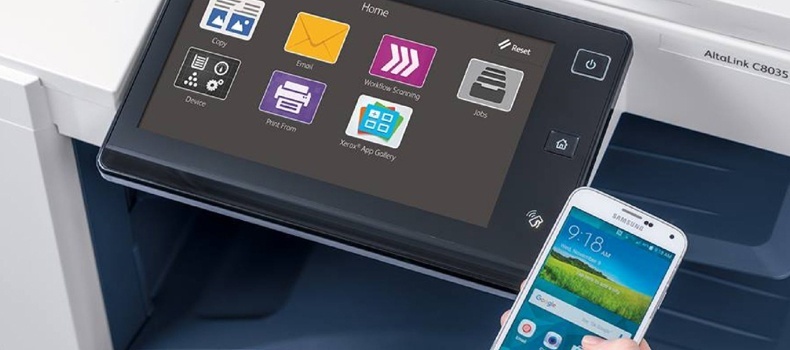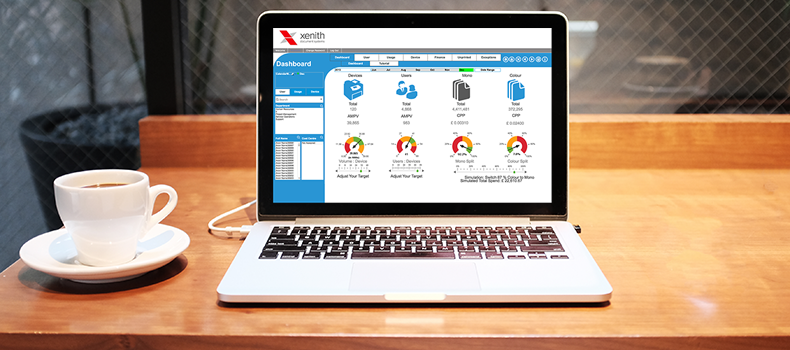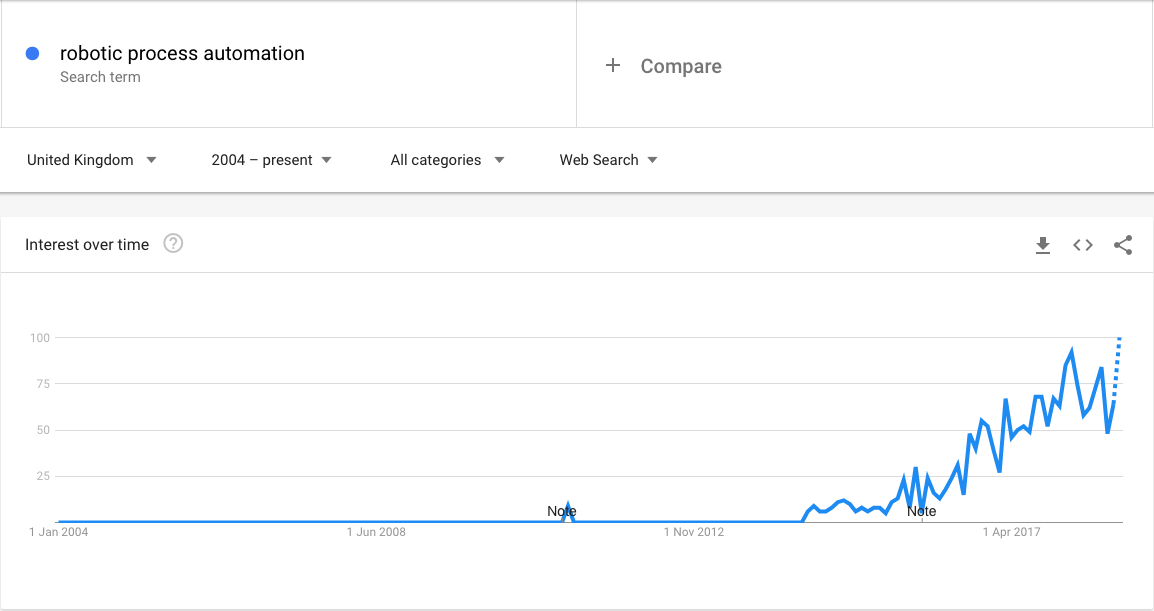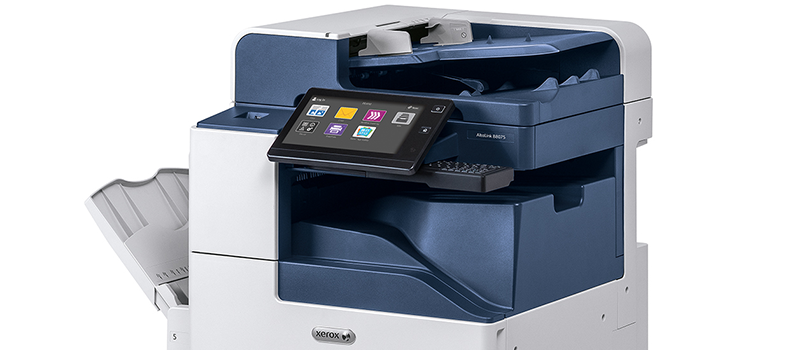Stay up to date with our latest news and insights
Supporting description on the types of content that feature in the blog.
09 November 2018

Office printing has evolved massively over the years, generally following the trend of the larger print industry, which has developed through history in different formats from early printing press through to the printers we know today.
As printing in offices has become an everyday part of life, Managed Print Services have evolved from supporting hard-copy devices, to supporting the document lifecycle within companies. The Multifunctional Device now plays the role of a ‘smart workplace assistant’ capable of downloading apps to support business processes and advanced workflows.
Fast-paced digital innovation has helped amplify the analytical, cost saving and time reducing benefits of MPS that every large company needs.
Digital advancements have even pushed MPS into the Managed Document Services space, as a way to transition print processes into digital processes, making companies more sustainable.

It all starts here. What actually is a managed print service (MPS)?
Xerox define MPS by the end result:
“The managed print services definition is broad, but the end result is simple: gaining visibility and control of your printing, which helps you save money and boost productivity. Managed print also helps you improve environmental sustainability and document security. “ (What is Managed Print Services?, Xerox)
This definition effectively helps to show that MPS can be defined in many ways and actually means different things to different companies.
What you understand Managed Print Services to be might actually differ to what your competitor thinks of as Managed Print Services, and this difference in service could even be an advantage for one of you.
MPS can more likely be defined by your objectives when it comes to print:
The issue with any definition comes when you consider the changing nature of the workplace and the processes along with it. However we define Managed Print Services today might be different tomorrow, especially when considering the increased emphasis on mobility, cloud services, big data, analytics and social media that are already changing the playing field.
Further to this, staff and employees have come to expect a new and different way of getting things done, which doesn’t always involve traditional methods of printing, i.e. sat at your desk, printing something to your nearest office printer.

The use of digital analytics has drastically changed Managed Print Services. For a long time, MPS providers have been able to report on how much printing has been done and the costs involved by using static and complex data from print management systems, but it’s only more recently, and due to digital advancements, that MPS providers have been able to monitor every aspect of printing for a company quickly, easily and at a glance.
It goes far beyond just telling you how much a company has printed and can actually tell you what an individual employee has printed, the printing cost of a specific department, and can even help to proactively fix issues or keep supplies replenished.
This video gives an example of how User Analytics can be used to identify high print volumes and cost at a department or even user level:
By using advanced analytics, MPS providers have the opportunity to give real cost savings to a company by working out where over and under utilisation is happening.
Print analytics has helped to move MPS forward in the digital age with better reporting and customer service opportunities. With different analytics in hand, such as device analytics or service analytics, MPS providers can make proactive decisions that couldn’t easily be made in the past.
It’s also these analytics that help a company choose how and where in the business that digital transformation could make a difference with the ability to review high-cost or time-consuming document and print processes.

Digital transformation is a solution involving digitalising processes to improve customer experience and customer journeys. While not all digital processes are customer facing, back-office digital processes can make a huge difference to the end customer.
Digital Transformation is a way to disrupt paper and as the business world moves from the traditional days of print towards the paperless office (or more likely the less-paper office), the need for digital transformation is only increasing.
Learn more about disrupting paper here
Managed Print Services and Digital Transformation help to influence each other. While MPS can help to identify paper processes that are ripe for digitalisation, digital transformation covers processes across the whole business beyond print and documentation.

Another new digital solution influencing print and MPS is the automation of business processes.
Automating processes is often talked about in IT and Robotic Process Automation (RPA) is a popular topic, in which software is used (the ‘robot’ in this scenario) to capture and interpret data in order to automate processes, data manipulation and communications across multiple systems.
 Figure 1 - Google Search trend for the term ‘robotic process automation’ in the UK, 2004-2018
Figure 1 - Google Search trend for the term ‘robotic process automation’ in the UK, 2004-2018
In some cases, automation can be used in printing and if not for the action of printing itself, it can be used for analytics and document processes or processes that involve printing.
There is so much that can be said about automation and the different processes that can be automated, but something that isn’t thought about is how printing makes the most of automation. For example, in print and document security, it’s actually possible for a printer to automatically redact sensitive information or block sensitive documents being printed.
This technology and innovation is truly rethinking print in the digital age by finding ways to not only save time and money but also keep the processes more secure.
As digital transformation continues to evolve, the automation of processes with allow for continual improvements to be made, which will allow you to fully understand the operations of your organisation and as a result will enable you to continue to work more efficiently and of course grow the business more quickly. (Digital Solutions - Improve, Xenith)

One topic that remains prevalent in the print industry is security and along with it, GDPR repercussions.
Document security has always been important for a company, but with the increase in digital innovation and more advanced cyber crime, any digital or connected device is effectively at risk from cyber crime.
With the ability to now print to almost any printer within the office remotely, the right security procedures need to be in place to reduce the risk of sensitive documents being left on the paper tray.
Initiatives like ‘follow-me printing’, in which an ID card or password might be needed to print the document can help reduce print-outs being left on the printer.
Since GDPR came into effect in May 2018, the penalties for getting print and document security wrong can be catastrophic. Although it might not be likely you’ll get a €20 million fine, the risk is there and it’s important to consider ways to keep everything compliant.
Find out more in our guide, How to keep printing, scanning & copying processes GDPR compliant - Download it here
It’s not just the obvious threats that might catch you out with print security, with risks stretching to how office guests might use printers, scanners or copiers. If you’re worried about your print security, find out how secure your set-up is with the print process risk-o-meter.
The rise in cyber crime and the introduction of GDPR are definitely things that are making companies rethink print in the modern age, but they’re also elements that are making MPS more predominant with MPS providers offering security advice and options for companies who don’t have all of the right safeguards in place.

With the digital age changing services and processes on an ongoing basis, choosing MPS is not as simple as just choosing a provider to meet today’s objectives, but takes a lot of thought to ensure the provider you choose meets future objectives.
As mentioned at the beginning, if MPS is defined by the objectives and goals of the service in hand, then it’s crucial to ask the right questions early in the procurement process and choose a future-proofed provider.
Looking beyond MPS at a company level, the services are likely to change in the next 5-10 years based on the technology and print industry changing.
According to a market study by Quocirca, the future of MPS will include “comprehensive assessment of the print infrastructure, which can help organisations better understand usage and opportunities for optimisation.” (Quocirca Print 2025, Xerox)
The study also resonates some of what we’ve mentioned here stating that:
“Managed print services (MPS) as an enabler for digital transformation. MPS is a proven approach for supporting digitisation efforts through the optimisation of paper and digital workflows. Leading vendors in this space have expertise in helping organisations to leverage MFP investments and implement document workflow integration tools.” (Quocirca Print 2025, Xerox)
MPS is changing and with the technology and connectivity available, it will hopefully change for the better and while we might not be looking at a completely paperless office in the future, we might be looking at a less-paper office, by which digital processes reign supreme and MPS has become even more of a blend of print and document services.

The blend of Managed Print and Managed Document Services (MDS) is already happening. While the future might indicate a further shift towards MDS with digital transformation pushing change, MPS providers are already adopting a strong stance on MDS to provide their customers with a future proofed service.
Where traditionally MPS might have focussed on print operations, technology has helped it move to a place where documents are placed at the center of the process and print is one way of delivering the document along with a lot of digital alternatives.
In the future, processes might always start with the document and printing the document will only be necessary in certain circumstances. If you’re looking for a new MPS provider in the foreseeable future, maybe consider a provider with the ability to guide you through digital transformation and one that can offer managed document services.

The move to digital is a game changer!
Processes are being digitalised, the idea of a less-paper office coming to fruition is on the horizon and how we think about print might change with new technologies such as 3D printing becoming more mainstream.
Printers aren’t likely to disappear from offices anytime soon but you might not see the same amount of use from them in the future and there might even be less printers per person in the next few years.
With all of the changes coming, companies might also struggle to choose and procure a service that enables them to get the best from printing, but also the best from their document management. If that’s the case for you and your company, we’ve got you covered!Supporting description on the types of content that feature in the blog.

20-09-2024
Digital document management tools offer a range of compelling benefits for businesses, including a PDF editor, a file converter and a form generator. You can also integrate with digital signatures qui...

20-09-2024
When choosing a SaaS software to deal with your company’s PDF documents and enable forms to be digitally sent and signed, you’ll want a product that’s user-friendly and easy to use. With Tungsten’s Po...

11-07-2024
Belkin is a global technology company that provides high-quality electronics products, from wireless chargers to power banks. Their people-centric approach and best-in-class functionality have positio...